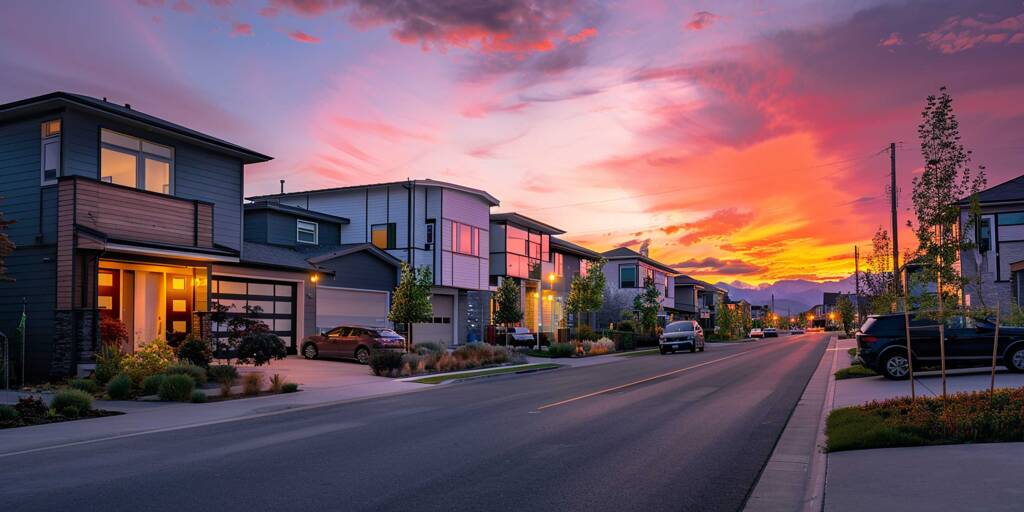
Designing Accessory Dwelling Units (ADUs) in California
Accessory Dwelling Units (ADUs) have become an increasingly popular solution for homeowners in California looking to maximize space and generate additional income. Whether you want to create an extra living space for family members, generate rental income, or simply increase the overall value of your property, ADUs offer a flexible and cost-effective approach. However, the success of an ADU project depends on careful planning, design, and ensuring compliance with local structural and zoning regulations.
In this guide, we will explore the key benefits of building ADUs in California, important design and engineering considerations, and how to make the most of limited space while meeting state and local requirements.
1. The Benefits of Building ADUs in California
A. Rental Income Potential
One of the most attractive reasons for building an ADU is the potential for rental income. In California’s high-demand housing market, ADUs offer an affordable housing option for tenants while providing property owners with a steady revenue stream. Whether you rent out your ADU on a long-term basis or as a short-term vacation rental, it can serve as a significant source of additional income.
B. Increased Property Value
Building an ADU is a smart investment that can increase the overall value of your property. Homes with ADUs are highly sought after, as they provide buyers with a flexible living space that can be used for guests, rental purposes, or extended family members. In the long term, the added value can outweigh the upfront costs of constructing the ADU.
C. Housing Flexibility
ADUs provide versatile housing options. They can be used to accommodate aging family members who need to live closer to relatives, offer private living quarters for adult children, or serve as a guesthouse for visitors. This flexibility allows homeowners to adapt the use of the ADU to meet changing family needs.
2. Key Design Considerations for ADUs
When designing an ADU, maximizing limited space and ensuring compliance with zoning and building codes are top priorities. Here are some essential design considerations:
A. Maximizing Space
ADUs are typically smaller than the primary residence, often limited to 1,200 square feet or less. To make the most of this space, efficient design is crucial. Consider multi-functional furniture, open floor plans, and the use of vertical space for storage. Clever space-saving solutions, such as built-in shelving, lofted beds, and foldable furniture, can significantly enhance the livability of the unit.
B. Open Concept Layouts
Open concept designs are ideal for smaller spaces, as they create a sense of spaciousness. An open floor plan that connects the kitchen, living room, and dining area helps reduce the feeling of cramped quarters. Large windows and strategically placed skylights can bring in natural light, making the space feel larger and more inviting.
C. Outdoor Access and Privacy
ADUs are often built on the same property as the main house, so designing the unit with privacy in mind is essential. This can be achieved through landscaping, fences, or placing the entrance to the ADU on a different side of the property. Additionally, integrating outdoor living areas, such as a small patio or garden, can enhance the usability of the space.
D. Sustainable Design Elements
Sustainability is becoming a priority in modern ADU design. Homeowners should consider energy-efficient appliances, solar panels, and green building materials to minimize environmental impact and reduce utility costs. Passive heating and cooling techniques, like strategic window placement and proper insulation, can further enhance the energy efficiency of the unit.


3. Structural Engineering Requirements
ADUs are subject to the same structural engineering requirements as other residential structures. A qualified structural engineer must be involved in the design process to ensure that the unit is safe, stable, and compliant with building codes. Here are some critical structural aspects to consider:
A. Foundation Design
The foundation of an ADU must be capable of supporting the weight of the structure and accommodating any site-specific conditions, such as soil type, slope, and proximity to other buildings. Common foundation types for ADUs include slab-on-grade or raised foundations, but the right choice will depend on your location and site conditions. Engineers must also ensure that the foundation complies with seismic standards, particularly in earthquake-prone areas like California.
B. Framing and Load-Bearing Elements
Proper framing and load-bearing design are essential to ensure the ADU can support the weight of the roof, walls, and any additional loads. Engineers will need to consider the weight of roofing materials, appliances, and furniture. Additionally, if the ADU is two stories or includes a loft, extra care must be taken to ensure the load is distributed properly to prevent future issues like sagging or cracking.
C. Seismic Design
California’s seismic codes are among the strictest in the country due to the state’s earthquake risk. ADUs must meet these codes to ensure that the structure can withstand seismic activity. Structural engineers will design the unit with seismic reinforcements, such as shear walls, hold-downs, and anchor bolts, to ensure the building remains safe during an earthquake.
D. Utilities and Connections
An ADU must have its own utility connections, including water, electricity, and sewage systems. Engineers must plan for these connections to ensure they are up to code and do not interfere with the primary residence. Installing energy-efficient and low-water-use fixtures can help reduce utility costs over time.
4. Ensuring Compliance with Local Regulations
Before embarking on an ADU project, it’s essential to be familiar with local zoning laws, building codes, and permit requirements. California state law has recently made it easier for homeowners to build ADUs, but individual cities may have additional regulations that must be followed.
A. Zoning and Permit Requirements
California law permits the construction of ADUs on single-family lots and in multi-family residential areas. However, local jurisdictions may have specific zoning laws regarding where ADUs can be built, how large they can be, and whether off-street parking is required. It is important to obtain all necessary permits before beginning construction to avoid fines or delays.
B. Size and Height Limits
In most California cities, ADUs are limited to 1,200 square feet or less. However, this size limit may vary depending on the location and lot size. Height restrictions may also apply, particularly for two-story ADUs. Homeowners should work with architects and engineers familiar with local codes to ensure the ADU design fits within these limitations.
C. Fire Safety and Access
ADUs must comply with fire safety regulations, which may include installing fire-rated walls, smoke detectors, and sprinkler systems. Additionally, the unit must have adequate access for emergency vehicles, which could impact where on the property the ADU can be built.

Conclusion
Designing and constructing an ADU in California is a smart way to maximize space, generate rental income, and increase property value. However, these benefits come with a responsibility to follow design best practices and meet structural engineering requirements. By focusing on space optimization, sustainability, and compliance with local regulations, homeowners can create a functional, safe, and aesthetically pleasing living space that adds long-term value to their property.
